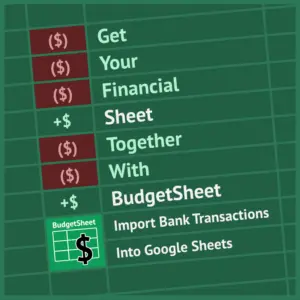For artists who have been selling their handmade products to individuals at fairs or online, no topic is more concerning than wholesale pricing. While they would love to see their products in shops and galleries, their one major fear is whether they can afford to “cut their prices” for the wholesale buyer.
This is when I wish all handmade sellers sold wholesale first! So, for just a minute, let’s pretend you are starting your business from scratch and you are only going to sell to stores. How would you begin to figure out your wholesale pricing?

Now clearly there is labor involved in making jewelry and you would like to pay yourself and whoever else might be making the earrings $20 per hour. In just an hour you can make four pairs of earrings, so one pair has $5 worth of labor added to the materials cost. You are up to $20.
But you cannot stop there, because you pay a modest rent for your space and have heat and electricity. In addition, there are expenses like jewelry cards, bags, and stickers. You also realize you have expenses like your phone, website, and you your accountant. Good! He can help you determine your overhead costs for your earrings, and he says it comes to just about $1.50 per pair.
Now the cost of your earrings, per pair, is $21.50. However, that is the real cost of each pair without any profit for you. You will never grow your business without some profit, so you add another $1.50 to the cost of each pair. Your analysis says the lowest price for one pair of your earrings is $23.00.
Perfect! You make an appointment with the owner of a local shop and show her your earrings. You tell her about the excellent materials you use including sterling silver and semi-precious stones. The store owner asks you if you sell them retail yourself, and you say no, your business is strictly wholesale. She is impressed with your work and thinks her customers will love your jewelry, so she places an order for 24 pairs at $23 each.

Several weeks after you deliver the earrings to her shop, you decide to pop in to see how they look in her store. You are pleased she has sold several pairs, but you are also surprised at the price she is charging. You thought they would be $46 per pair, but now you see she is selling each pair for $52!
In a pleasant chat with the owner, she tells you that the costs of operating her store have risen so much, she can no longer remain in business unless she marks up her inventory by at least 2.25%. Some items in her store even have a greater margin. It’s just the cost of doing business these days. You leave content that your earrings look great in her store and they are selling there.
A few months later you are contacted by a local art organization which is holding their first art fair. They beg you as a local artist to be part of the event. You promise to consider it. When you do, you realize that many people who will be coming to the show are also customers of the shop selling your earrings. You also know that if you charge less than she does, she will not be pleased. In the end, you make the decision to do the art show, protect your wholesale customer and charge $53 dollars a pair for the earrings. Conclusion: doing a retail event once in a while sure helps the bottom line!
Of course, this is a made-up scenario, but to a great extent it is true and real. You are covering your costs and have a small profit built into each piece of your work when you sell it wholesale. And by selling in volume, your materials costs are dropping, your productivity is increasing, and your business is growing.

You also realize that your work is worth the $52 price because she is selling it for that amount, and you even got a bit more. So, imagine if you had not decided to sell wholesale first? You would have figured a good price for your work was just $23, and boy, would you be undervaluing your work!
Now let’s return to the real world. You still absolutely need to figure out the lowest price for your work by using a formula which adds Cost of Materials, plus Cost of Labor, plus Overhead, plus Profit = Lowest price.
Materials + Labor + Overhead + Profit = Lowest Possible Price
That is your wholesale price. If you really think that this price is not acceptable, you need to do something to lower the costs: redesign your work, purchase different or lower cost materials, make production simpler and faster, move to a less expensive place, and so on until you think the market can bear your price.
If you are just thinking of entering the wholesale market, now is the time to start adjusting your retail prices. You can do it gradually, and on products that seem to sell the easiest. Simultaneously, you can look for ways to cut expenses and also to develop new products that do not have a price history with your current customers.
The most important thing to keep in mind is that your new customer, the store owner, can never afford to compete with you. She has stiff competition from other local shops, the big box stores, and more online sellers than she can count. The last person she wants to compete with is you! And believe me, she will find out if you are underselling her, and in the end, she will find another supplier. You are her business partner. If she succeeds selling your products, so do you.
Sometimes seeing things from a different perspective sheds a lot of light on a problem. We hope this perspective on wholesale pricing gives you the information, and the confidence, you need to succeed!






